They have shaken up the rod sector in the last few years, found countless fans and in many areas our fishing is indispensable – 10ft rods.
From the light fun rod to the heavy version for large fish. Whether canal, park lake, street fishing or boat fishing, the reasons can be different, but maybe just also a little trendy. Why not, the main thing is that it’s fun and ideally also makes sense. For decades 12 and 13ft rods have dominated the scene, although the early English pioneers typically marked the first steps in the history of carp fishing with rods around three meters, i.e. 10ft.
So now back to the roots? Yes, in a way. For many years the trend has been towards long range and long range angling, but active and mobile fishing has found many friends recently. The rubber mallet for the weekend camp stays in your pocket, the motto is fast and quiet, a lot happens over significantly shorter distances or right in front of our feet. Shorter rods simply play into the cards of this trend in many situations … and therefore often really make sense.
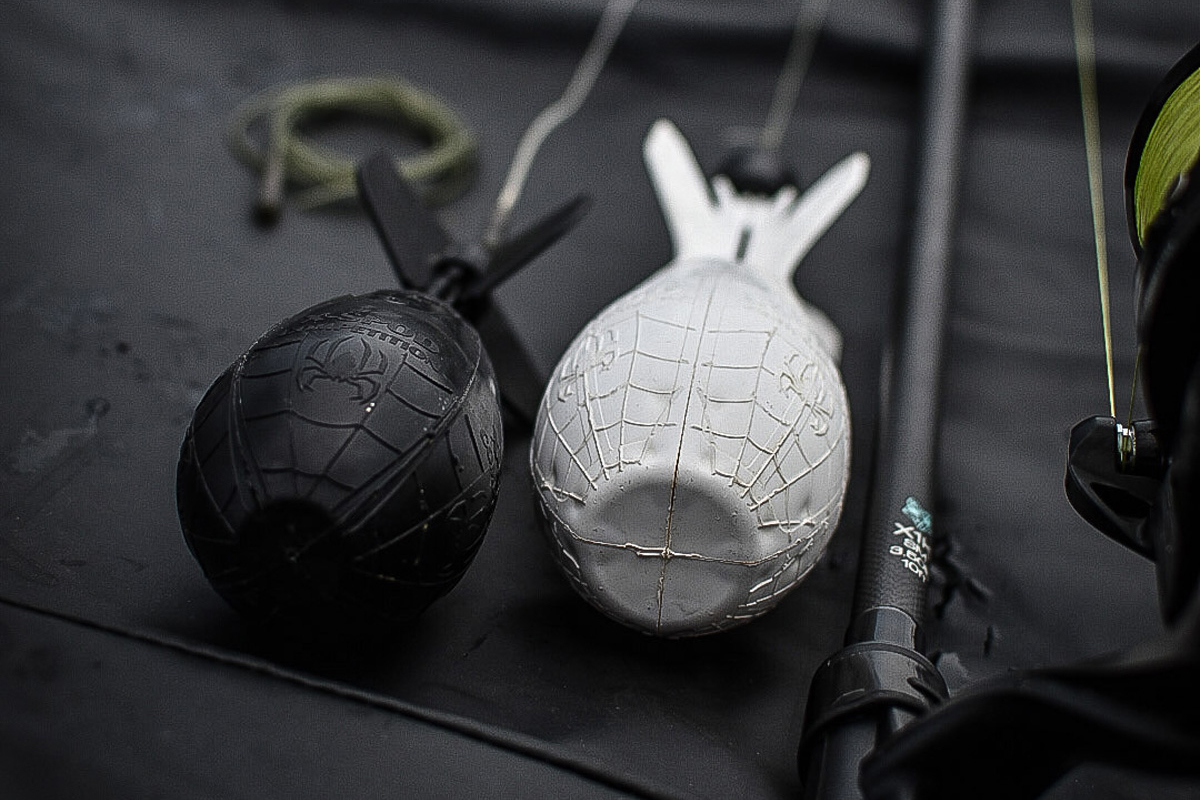
But what about the corresponding spod rods? Even if it took a while, today we can also find a large number of 10ft rod models that were designed for feeding with the popular feed rockets or are at least advertised for this.
I was also a bit sceptical at the beginning and couldn’t really imagine what advantage the shorter spod rods could bring, apart from visually harmonising with the rest of the 10ft setup. In the meantime I know a variety of situations in which I would prefer the shorter “rocket launchers”, be it for reasons of pack size, choice of location, throwing distance or throwing requirements. Actually there is only one real exclusion criterion – real long-range spodding at distances over 100m.
I prefer to use my 10ft model for widths up to max. 80m, and tend to be shorter. Not that greater width is a problem, but I find it more pleasant to use longer models from a certain distance.
In order to be able to fully exploit the advantages of a 10ft spod rod when feeding at short to medium distances, I would like to give you three tips that will really bring the 10ft models to their advantage on short range
Tip 1 – choose the right test curve
With the 12 or 13ft models we usually find an action range of 4-5.5 sometimes up to 6lbs. If we focus on high weights and maximum throwing distances, these weight classes are certainly useful, especially since test curves from different manufacturers are often difficult to compare with one another.
However, if I want to make significantly fewer meters with my short spod rod, it must not have one property – a performance that is too stiff! I never use this rod for violent throws but for fast, precise feeding over shorter distances. Models with 3.5 to a maximum of 4lbs are ideal here. They allow me a more throwing feeling and a high degree of precision, at the same time a better charging of the rod blank and thus significantly more flexibility in the throwing technique. No matter whether it is a pendulum throw, a flick or a short and difficult acceleration path on the steep bank, if the rod works, none of this is a problem and with a little practice the Spod lands where we want it.
My Wolf SM Rod in 3.5lbs does a fantastic job for this. I used the X3K and X1K version and both models convinced me completely. The initial fear that the relatively low test curve might be too weak for large rockets vanished after the first throws. For me now the spod rod for “trick shots” in special situations.
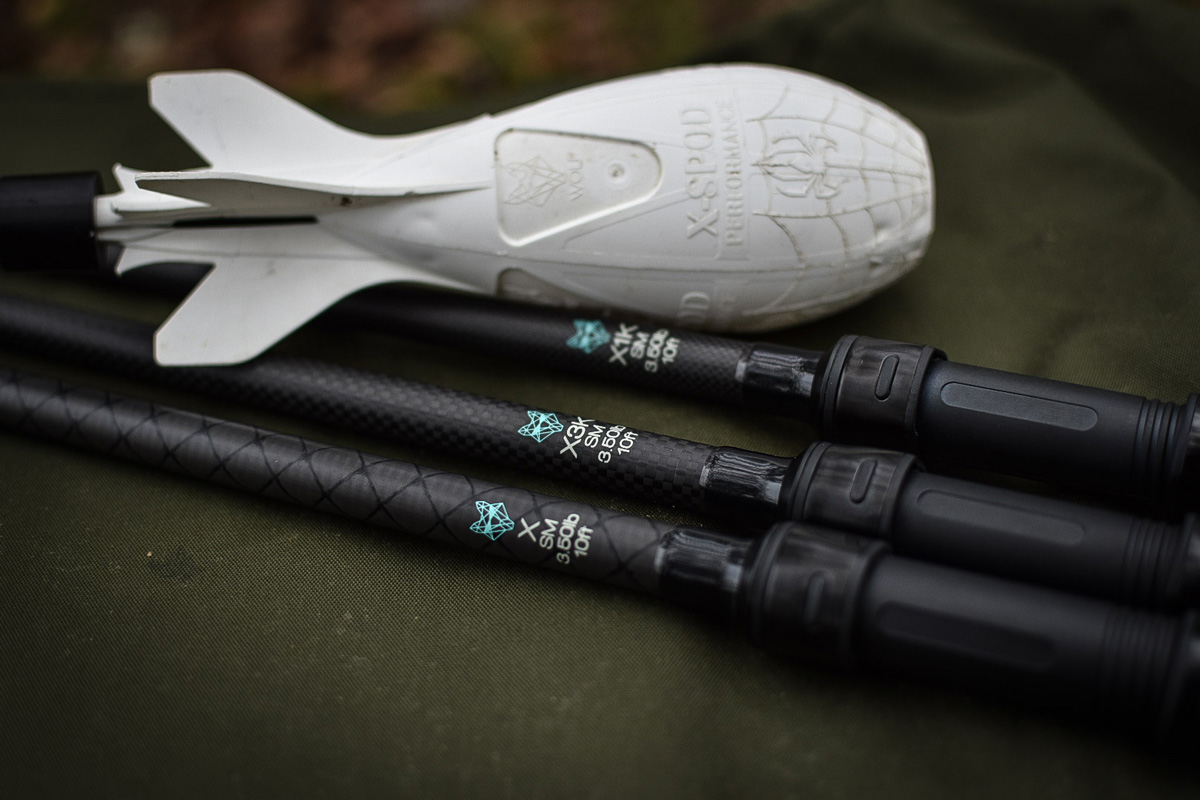
Conclusion- with a broomstick the potential of short spod rods remains undiscovered!
Tip 2 – Adapt your Spod assembly to the situation
If it is not about maximum distance, we can adapt and optimize our casting setup.
If you usually use a thin braid with an additional two to three rod lengths of chalk or leader line for long rods, you can safely do without this.
My smaller spod reel is completely filled with a relatively thick 0.28 braided cord from RidgeMonkey and only the last metre in front of the spod is pimped. With the shorter distances, there is nothing wrong with using a thicker cord. With this I have significantly less stress with tangles and wigs, at the same time I can usually save myself a glove or finger protection.
For the last metre, two variants have prevailed and have proven their worth. I either tie a 1m long piece of Hardmono or a Safezone Leader between the rocket and the braid. There is a small buffer in my assembly and at the same time the last few meters are reinforced. This allows my Spod to find a stable flight position more quickly, which should not be underestimated at short distances and with complicated throws. A rollover when throwing or hauling in the Spod is effectively counteracted and, last but not least, the stiffened end piece helps if the missile has to be fired from an unusual position.
The buffer can always do no harm, should it be thrown too forcefully into the clip of the reel or the acceleration is a bit abrupt. Have you ever forgotten to open the roll bar …?
If you want to do without the buffer, you can alternatively simply pull a long piece of silicone tube with an anti-tangle sleeve directly onto the braid and onto the connecting swivel of the Spod. In this way, too, the necessary stiffening is achieved and an additional knot is saved.
Speaking of knots, the annoying part that always rushes through our rings during classic throwing and somehow always gives me a bad feeling, we have also saved with this setup or is outside the danger area behind the rings.
Conclusion – thick cord and stiff leader for less stress and more flexibility!
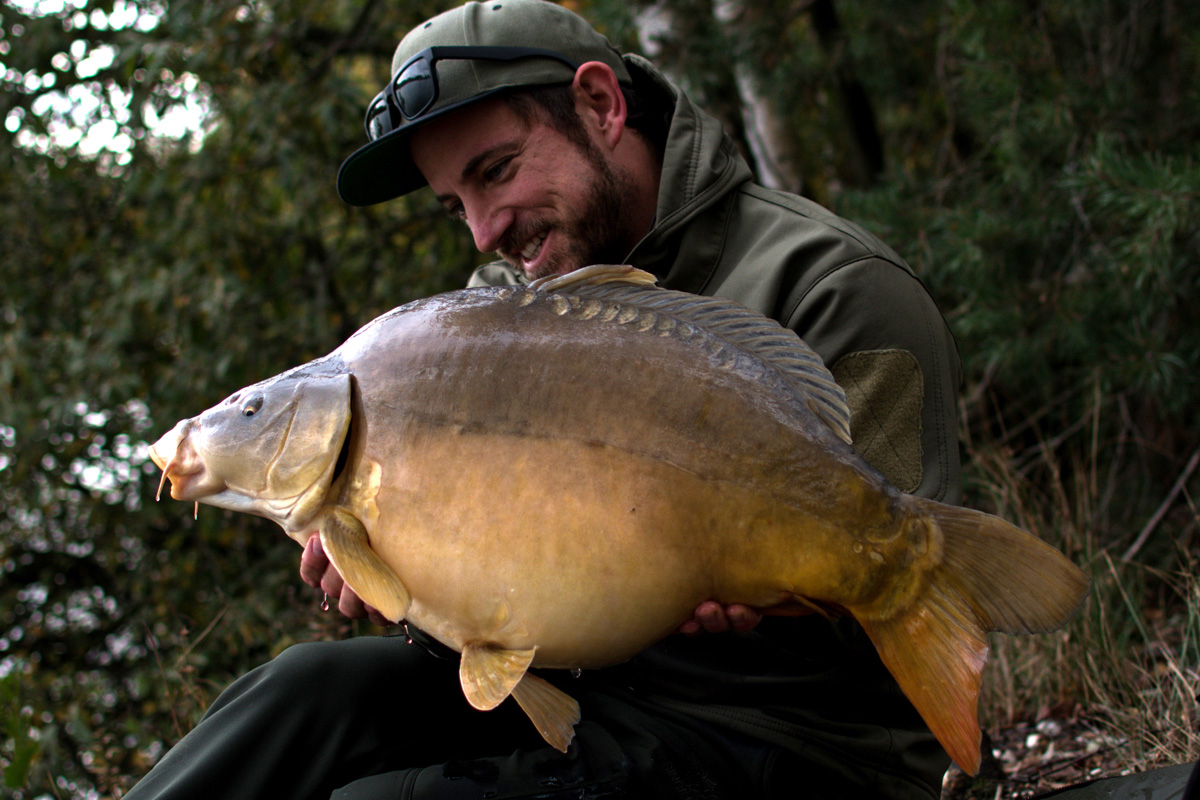
Tip 3 Use a “jump start”
One of the main reasons why shorter rods are often argued for is an impassable or overgrown bank and less room to move around. If the setup fulfills the above characteristics and you are ready to solve problems with a little practice and creativity, you can quickly take Spodden with short rods to a new level. Whether from the water, on the steep bank or in dense shrubbery and branches. The slightly shorter rod makes handling basically easier and therefore blocks me less possibilities. If I am clearly restricted in my range of motion, I have to define the optimal starting point for my bait rocket at least.
If I then have the right Spod mounted, almost anything is possible. For me the absolute number one on the market are the X-Spods from Wolf. I share this view out of real conviction regardless of my work for the company. I can only urge everyone to give this rocket a chance and test it. Mega robust, with easy handling, no annoying opening in the flight phase and also extremely flexible for our 10ft Spodding.
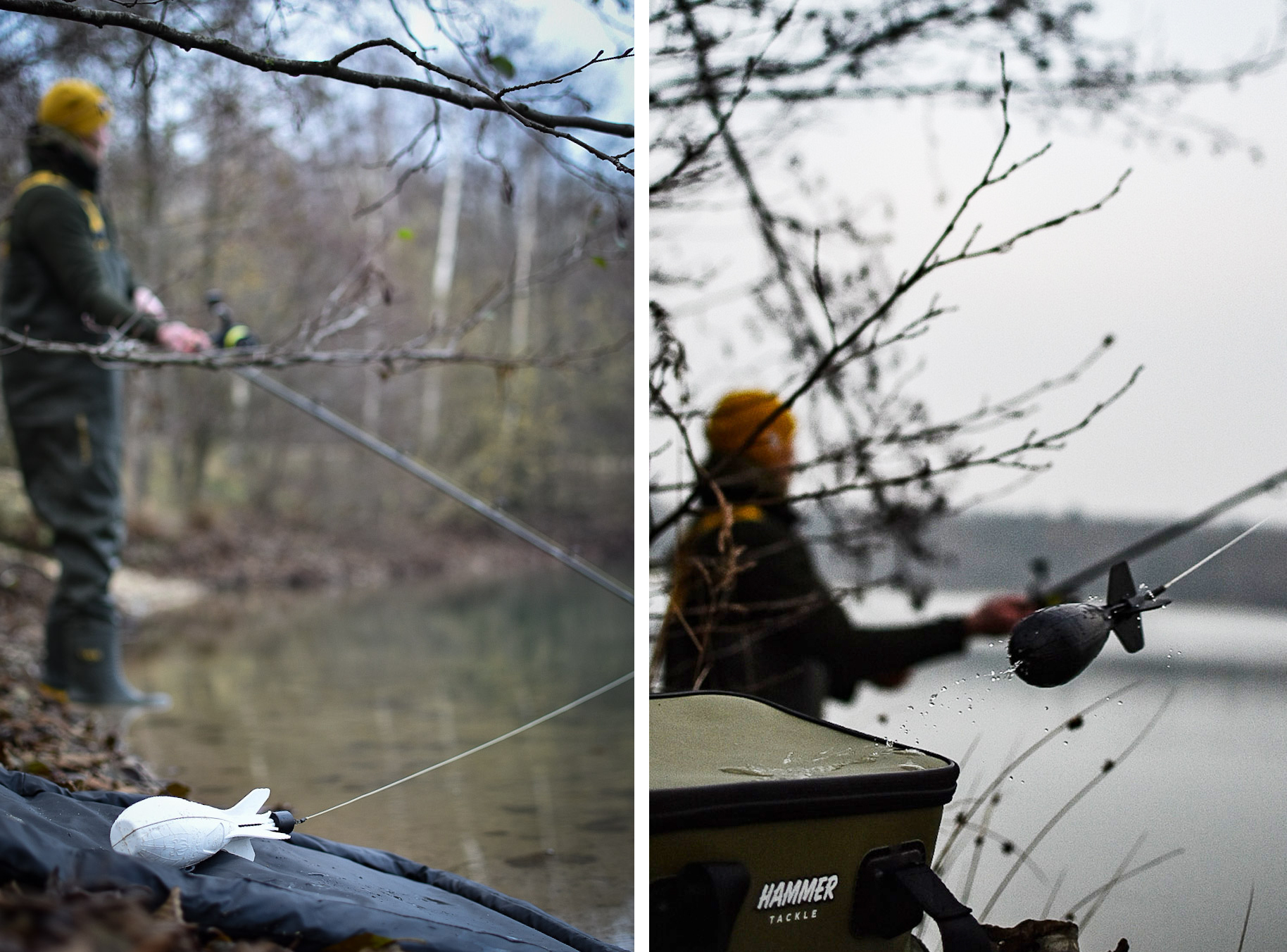
If I now use a suitable “start-up aid”, the Spod can be thrown from a wide variety of positions thanks to its magnetic locks when filled. Regardless of whether the Spod is started in the water, on the ground or from a small gap in the bush from the bucket lid, the fully closed body and the locking system make it possible. Once the Spod is full, it can simply be placed in the appropriate place without having to be particularly careful. Unthinkable for models with an opening mechanism at the tip of the rocket. The first time we come into contact with the ground, we find the lovingly filled contents on the same. And open models are also unsuitable in these special situations, especially when throwing to the side or swinging.
Ideally, I use a shelf in such special situations so that the Spods can be started cleanly and safely. A bucket lid, the unhooking mat or the suitably folded groundsheet are an ideal starting aid. On the one hand, I prevent the Spod from getting stuck at the start, on the other hand I set a fixed starting point and achieve a constant starting position when throwing sideways. Definitely the key to more precision when feeding. The floating body also allows us to take off from the surface of the water without any problems and gives us significantly more leeway.
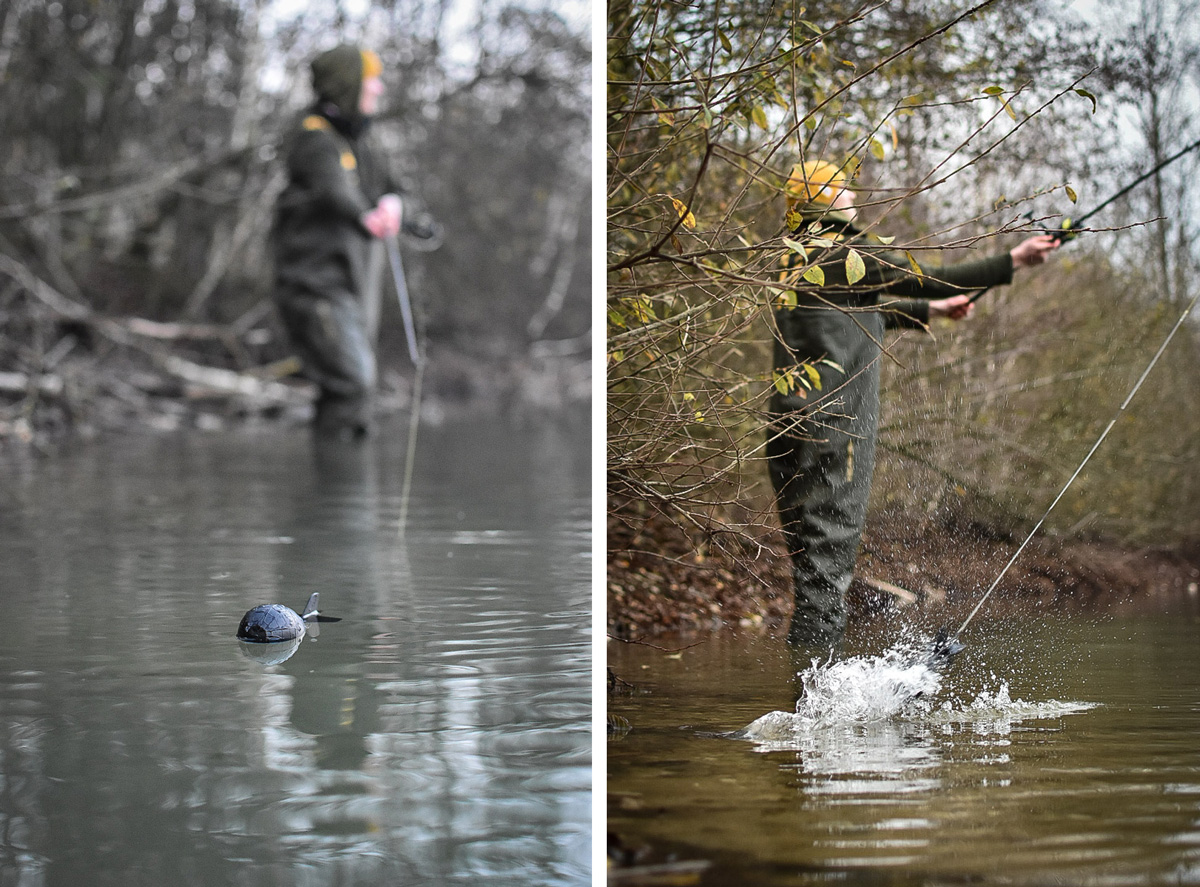
The whole thing can still be taken to extremes. If I am traveling with a partner, they can fill my rocket and even a launch from their hand can make all the difference in certain situations, provided they have trust and good agreement.
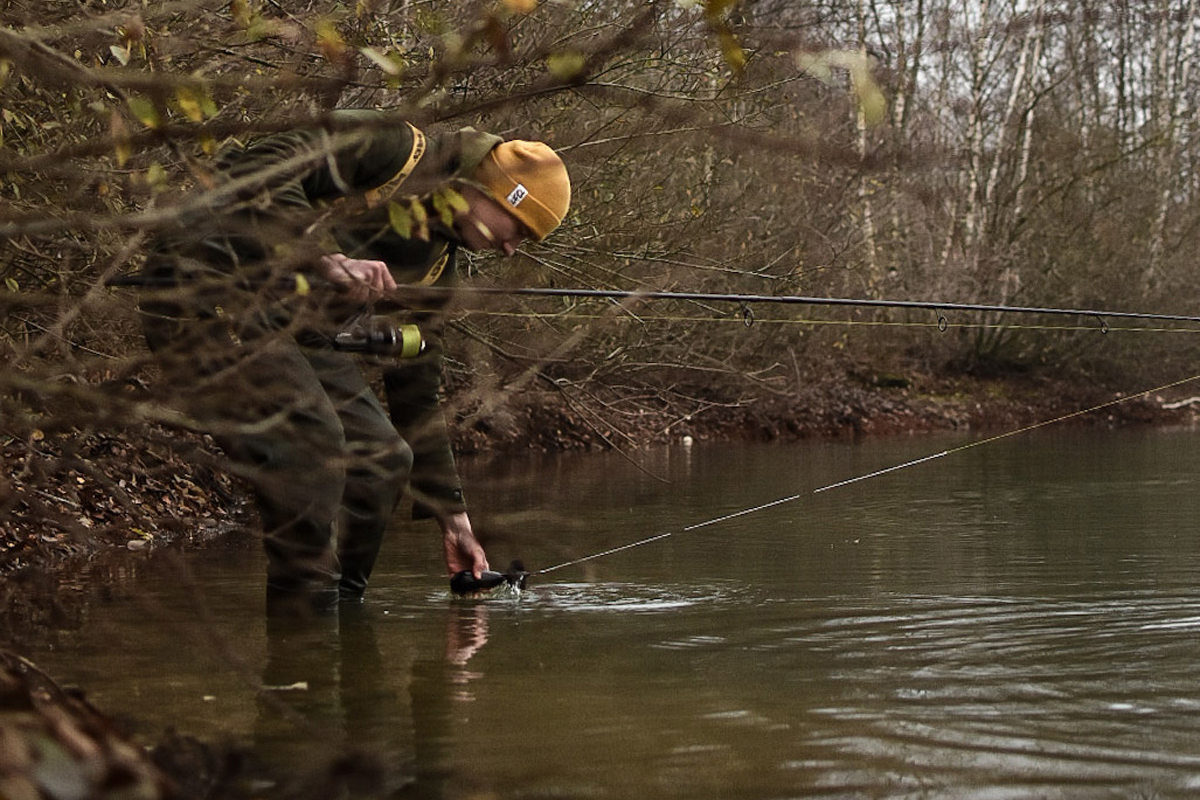
Sure, such “trick shots” are definitely something for special situations and definitely require a certain amount of practice and creativity – but not to be underestimated when spodding with 10ft rods. If you get involved, you will quickly notice that the flexibility and the fun factor with the short rods can be very high.
Cheers, Manu

 WISHLIST
WISHLIST
